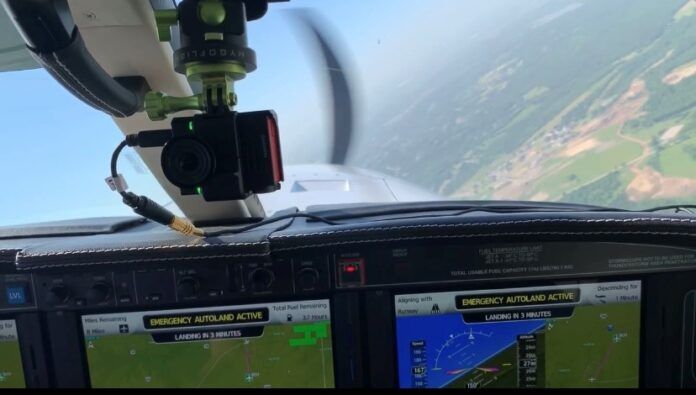In the world of aviation accomplishments, the prestigious Robert J. Collier Trophy is a pretty big deal. And deservingly, the award for Garmin’s AutoLand acknowledges the huge engineering effort that brought to market airplanes that land themselves when the pilot can’t. To me, the engineering talent that made this possible sort of got lost in celebration in early 2020 when Garmin made the announcement, and the first thing Garmin’s Senior Aviation Programs Engineer Bailey Scheel reminded me of when I interviewed her at the Collier event this past November was how long it took to bring AutoLand to market. “We had been working on this for over seven years,” she said with wide eyes. That’s it? I know other avionics companies that take longer than that to earn a TSO on a single box. As the tuxedo-clad Garmin team were grinning like goats in a Kansas pasture during the award presentation, I was thinking the accomplishment should be incentive for other companies to try harder.
I suspected Garmin was working on an autonomous system for a number of years—the secret hangar at Garmin’s flight ops in Kansas was off limits to my cameras whenever I visited. But when I strapped in and flew a flight-test version of AutoLand in the summer of 2019, I wasn’t thinking of the Collier Trophy. I was wondering if the FAA would ever sign its name on the new type certificate for the Piper M600, for which AutoLand would be offered as original equipment.
“Some people ask what if, and to us, the worst they can say is no,” Garmin’s Phil Straub told me at the time. The FAA—not without putting Garmin and Piper through the money-syphoning regulatory wringer—ultimately said yes to the system in the Piper. And subsequently two more times, granting type certification for Safe Return in the Cirrus Vision Jet and for HomeSafe in Daher’s TBM940 turboprop. All three companies say that the system has helped sell airplanes to older buyers (and their concerned families) who otherwise might have passed on the deal. There are currently over 350 AutoLand-equipped airplanes flying, and it’s unclear whether the hard insurance market is recognizing the autonomous backstop in premium rates and policy renewals.
With the Collier back in the Smithsonian Air and Space Museum (it only leaves the museum for the presentation hoopla) it’s time for Garmin to get back to work. It knows that all eyes are watching for a version of AutoLand for non-turbine aircraft, and piston-powered Cirrus models seems to be a likely first application, in my estimation. Since an important element of AutoLand is autothrottle, Garmin has to bring autothrottle to pistons. And then there is the aftermarket, where Garmin has already delivered Safe Glide—automation that can tame engine failures by flying to the best landing zone. “Our focus now is expanding the market,” Garmin’s Bailey Scheel told me. And who knows how much money buyers would be willing to spend to retrofit AutoLand in their aircraft, and how long it might take the FAA to give its nod to a system for the aftermarket. But you can bet it eventually will, just as it did for the Collier-winning first-gen AutoLand.
USED AIRCRAFT GUIDE
Whenever I ask readers what they like the most about Aviation Consumer, unanimously the answer is our monthly Used Aircraft Guide report. The huge amount of work that goes into each report is worth it when readers tell me that one was resourceful in closing (or walking away from) a deal. And as we launch the first issue of the new year, our UAG has never been more important. In the 30-plus years I’ve been following the market and in over 10 years of producing the UAG, I’ve never seen aircraft values soar this high. That makes it even easier to get stung because frankly, some airplanes—especially ones in demand—are selling for a lot more than they should as sellers simply try and take advantage of a seller’s market. As the fleet ages, I want our UAG reports to help buyers weed out the lemons from the cherries.
But we need your help. If you have experience owning or flying a particular model, tell us about it so we can include the remarks in the Feedback section. If you don’t own an airplane we‘re covering, chances are you know someone who does. Spread the word. We can always use good images and real-world data on operating costs, maintenance and performance. Historically, we’ve repeated reports on popular models every three or four years, but in a quickly changing market we’re looking at some models more frequently. Last, if there’s a model you want us to cover, let us know and we’ll add it to the list. —Larry Anglisano





